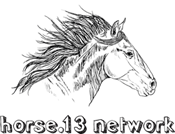| Nara Shikamaru // 奈良・シカマル ( @ 2009-08-15 11:17:00 |
|
|
|||
| Entry tags: | always failing sakura, ic, lmf lmf worst ta ever, where's bitchass whore pig |
two.
[biochemistry;]
Course Title; Biochemistry
Course ID; CHEM 419, BIOL 419
Prerequisites; BIOL 210 and CHEM 210. Concurrent enrollment in CHEM/BIOL 419L required.
Schedule; MWF, E+
Course Description; Basic concepts and foundations of biochemistry, including structure and function of macromolecules; bioenergetics; enzyme function and regulation; metabolic pathways. Designed to prepare pre-professional students for later studies. Students majoring in Biology or Chemistry must earn a 75 or higher.
Grading; Midterm Examination (25%), Lab Examination (35%), Final Examination (30%), Problem Sets (10%)
Topic Outline;
-Unifying themes in biochemistry.
-Water, pH, and buffers.
-Bioenergetics.
-Amino acids, peptides, and proteins.
-Enzymes.
-Carbohydrate characteristics and metabolism.
-Aerobic metabolism.
-Lipid characteristics and metabolism.
-Nitrogen fixation, synthesis and degradation of nitrogenous molecules.
-Integration of metabolism.
Notes; overall class average is a 71. overall curve average is a 4.
[&c.]
[/biochemistry;]
[organic chemistry;]
Course Title; Organic Chemistry
Course ID; CHEM 319
Prerequisites; BIOL 210, CHEM 210. Concurrent enrollment in CHEM 210L required.
Schedule; TThF, C+
Course Description; These courses study the chemistry of carbon compounds and their properties, structures and reactions. It emphasizes the study of the principle classes of aliphatic and aromatic compounds, which in conjunction with selected experiments, gives an understanding of the mechanisms of organic reactions. Students majoring in Chemistry must earn a 70 or higher.
Grading; Midterm Examination (30%), Lab Examination (30%), Final Examination (35%), Problem Sets (5%)
Topic Outline;
-Atoms, molecules, bonding, polar and nonpolar molecules, intermolecular forces, solubilities, Lewis structures, preliminary ideas of resonance, arrow formalism, acids and bases.
-Introduction to orbitals, molecular orbital description of bonding, hybridization, structure of methane.
-Alkanes- conformational analysis, structural isomerism and nomenclature, alkyl groups.
-Alkenes- structure and bonding, nomenclature, E-Z notation, hydrogenation, relative stabilities. Alkynes- structure and bonding, relative stabilities, double and triple bonds in rings.
-Dienes and the allyl system, conjugation, introduction to the concept of aromaticity. UV spectroscopy.
-Stereochemistry- chirality, enantiomerism, R-S notation, diastereomerism, optical resolution.
-Ring systems- strain, stereochemistry of cyclohexane, conformational analysis of cyclohexane and its substituted derivatives, bicyclic and polycyclic compounds.
-Nuclear Magnetic Resonance (NMR) spectroscopy.
-Infrared (IR) spectroscopy.
-Alkyl halides, substitution reactions of alkyl halides- SN 2 and SN 1 mechanisms. Elimination reactions- E1 and E2 mechanisms.
-Overview of substitution and elimination reactions, oxidation of alcohols, rates and equilibria, syntheses.
-Acids and bases revisited. Additions to alkenes- mechanism of hydrogen halide additions, regiochemistry, resonance effects, carbocation stabilities, addition of other unsymmetrical reagents, hydroboration, dimerization and polymerization of alkenes.
-Carbocation rearrangements, addition of halogens to alkenes, oxymercuration, epoxidation and chemistry of oxiranes, cyclopropanation, carbenes, ozonolysis, alkene oxidations with permanganate and osmium tetroxide, addition reactions of alkynes.
Notes; overall class average is a 51. overall curve average is a 6.
[&c.]
[/organic chemistry;]
class syllabuses are out. so are the book listings.
go at 'em, i guess.
some people need to stop bumming off money from others. it doesn't grow on trees. yes, i'm referring to you.
((ooc; ... Ino. 8|))
scribbld is part of the horse.13 network
Design by Jimmy B.
Logo created by  hitsuzen.
hitsuzen.
Scribbld System Status

